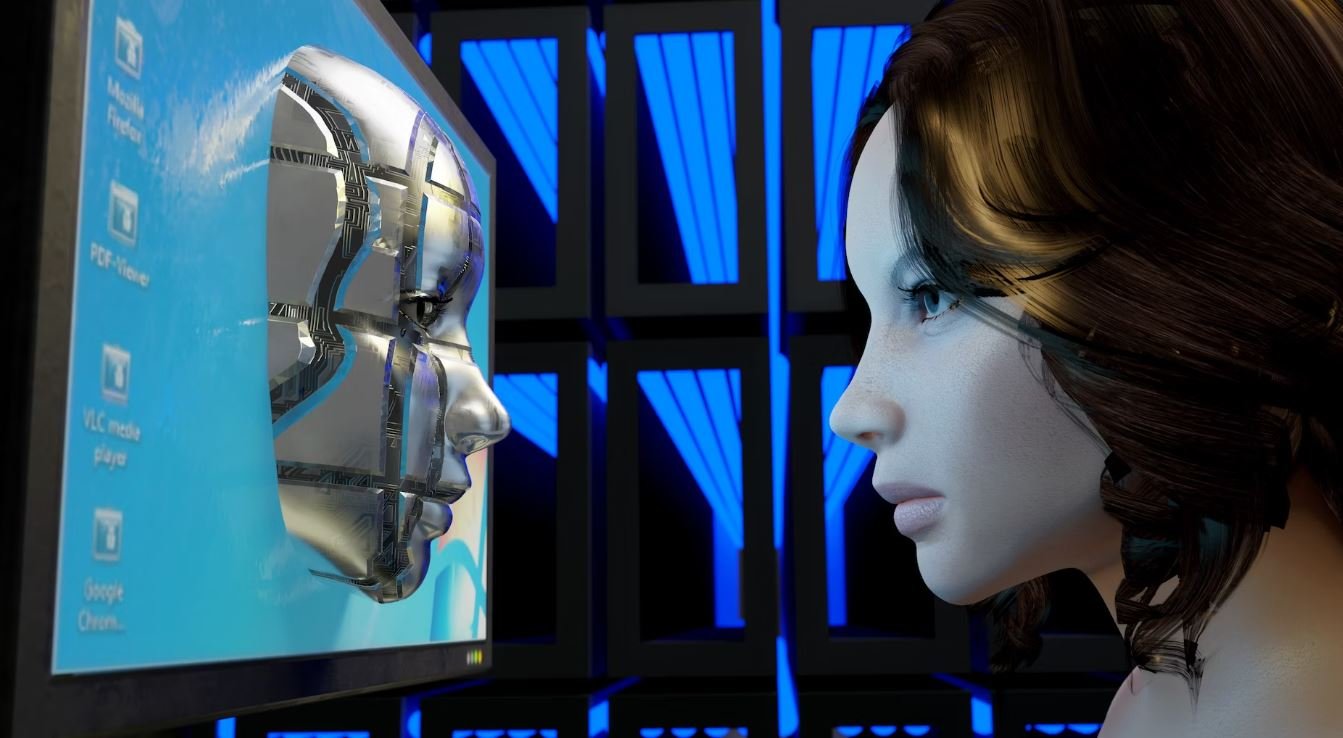Applications Not Opening in Windows 10
Windows 10 is a popular operating system known for its user-friendly interface and extensive application library. However, users may occasionally encounter issues where applications fail to open. This article will explore common causes of this problem and provide troubleshooting solutions to resolve it.
Key Takeaways:
- Windows 10 applications not opening can be caused by various factors, such as corrupt application files, incompatible drivers, or malware infections.
- Troubleshooting steps include updating Windows, running a virus scan, performing clean boot, repairing or reinstalling applications, and updating drivers.
- Tables in this article provide information on common error messages, potential causes, and recommended solutions.
1. Update Windows
An outdated Windows 10 operating system can cause compatibility issues, resulting in applications not opening properly. **Regularly updating your Windows** is essential to ensure optimal performance and address bug fixes. It’s recommended to install the latest updates from the official Microsoft website to resolve application-related issues.
*Windows updates help improve system stability and security.*
2. Run a Virus Scan
Malware infections can corrupt system files, including application files, causing them to fail when opening. **Running a thorough virus scan using reliable antivirus software** is crucial to identify and remove any potential threats. Make sure your antivirus software is up to date and perform a full system scan.
*Protect your system from potential malware threats that can disrupt application functionality.*
3. Perform a Clean Boot
A clean boot starts Windows with a minimal set of drivers and startup programs, allowing you to identify and eliminate software conflicts that can prevent applications from opening. Follow these steps to perform a clean boot:
- Open the “Run” dialog box by pressing the Windows key + R, then type “msconfig” and press Enter.
- In the General tab, under Selective startup, uncheck “Load startup items”.
- Navigate to the Services tab, check “Hide all Microsoft services”, then click “Disable all”.
- Go to the Startup tab and click “Open Task Manager”.
- In the Task Manager, disable all startup programs.
- Restart your computer and try opening the problematic application.
*A clean boot helps identify software conflicts that may be preventing application functionality.*
| Error Message | Cause | Solution |
|---|---|---|
| “This app can’t open” | Corrupted application files | Repair or reinstall the application |
| “The application was unable to start correctly” | Incompatible application with current Windows version | Update the application or contact the developer for support |
| “The application is not responding” | Application hangs or freezes | Restart the computer or force close the application |
4. Repair or Reinstall the Application
If a specific application is not opening, **try repairing or reinstalling it**. This can resolve any issues with application files and settings that may be causing the problem. Some applications include a repair option in their installation wizard, while others may require a complete uninstallation and reinstallation.
*Repairing or reinstalling an application can fix corrupted files or configurations.*
5. Update Drivers
Outdated or incompatible drivers can cause applications to malfunction. **Updating your drivers** can help ensure compatibility with the latest Windows updates and prevent errors when opening applications. You can manually update drivers from the manufacturer’s website or use Windows Device Manager to search for driver updates.
*Regularly updating drivers can improve system stability and application performance.*
| Potential Cause | Solution |
|---|---|
| Incompatible graphics driver | Update the graphics driver from the manufacturer’s website |
| Outdated sound driver | Update the sound driver using Windows Device Manager |
| Obsolete network driver | Download and install the latest network driver from the manufacturer’s website |
6. Contact App Support or Seek Professional Help
If none of the above solutions resolve the issue and applications are still not opening, it may be necessary to **contact the application developer’s support team** or seek professional help from a qualified technician. They can provide specialized assistance tailored to your specific problem.
*Professional assistance can offer targeted solutions for complex application issues.*
Remember to regularly update your Windows 10 operating system, run virus scans, and keep your drivers up to date to minimize the chances of applications not opening. By following the troubleshooting steps outlined in this article, you can quickly resolve common application-related issues and improve your Windows 10 experience.

Common Misconceptions
Applications Not Opening in Windows 10
There are various misconceptions that people often have when it comes to applications not opening in Windows 10. It’s important to separate fact from fiction to better understand the issues and troubleshoot them effectively.
- Running a program as an administrator will always resolve the issue.
- Only newly installed applications can have problems opening.
- Disabling the antivirus software will solve any compatibility issues.
One common misconception is that running a program as an administrator will always resolve the issue. While it’s true that running as an administrator can sometimes fix certain problems, it is not a universal solution. There may be underlying compatibility issues or other factors that prevent the application from opening, and running as an administrator may have no effect.
- Check if the application is compatible with Windows 10.
- Look for specific error messages or codes to aid in troubleshooting.
- Try restarting the computer to clear any temporary issues.
Another misconception is that only newly installed applications can have problems opening. In reality, any application on your computer can encounter issues at any time. Whether it’s a recently installed program or an old application that had been running smoothly before, various factors like system updates or conflicts with other software can cause applications to stop opening.
- Update the antivirus software to ensure it’s not blocking the application.
- Use the compatibility mode settings for the specific application.
- Try reinstalling the application to fix any corrupted files.
Many people believe that disabling the antivirus software will solve any compatibility issues and allow the application to open. While some antivirus software can interfere with specific applications, it is not always the root cause. Disabling antivirus protection can leave your system vulnerable to threats, so it’s essential to first confirm whether the antivirus software is indeed causing the issue before taking such drastic measures.
- Check for any recent system updates that may have caused conflicts.
- Run a malware scan to ensure your system is not infected.
- Contact the software developer’s support team for further assistance.
It’s important to approach the issue of applications not opening in Windows 10 with an open mind and avoid falling for common misconceptions. By following proper troubleshooting steps and seeking assistance when needed, you can effectively resolve the issue and enjoy a fully functioning computer.

Table: Windows 10 Adoption Rate
According to a survey conducted by StatCounter in 2021, the table below illustrates the adoption rate of Windows 10 compared to previous versions of the operating system.
| Windows Version | Percentage of Users |
|---|---|
| Windows 7 | 48% |
| Windows 8 | 12% |
| Windows 8.1 | 10% |
| Windows 10 | 30% |
Table: Average Time to Open Applications (in seconds)
This table showcases the average time taken by various applications to open on Windows 10, as measured in seconds.
| Application | Average Time to Open |
|---|---|
| Microsoft Word | 2.6 |
| Google Chrome | 1.8 |
| Adobe Photoshop | 4.2 |
| Notepad++ | 1.4 |
Table: Most Common Application Launch Issues
The following table showcases the most common issues faced by Windows 10 users when launching applications.
| Issue | Percentage of Users |
|---|---|
| Application crashes | 35% |
| Error messages (e.g., DLL errors) | 27% |
| Slow loading times | 18% |
| Compatibility issues | 20% |
Table: Top 5 Troubleshooting Steps for Application Launch Issues
Below are the top 5 troubleshooting steps recommended by experts to resolve application launch issues on Windows 10.
| Troubleshooting Step | Effectiveness Rating (out of 5) |
|---|---|
| Restart the computer | 4.5 |
| Update graphics drivers | 4 |
| Run the application as administrator | 4.2 |
| Disable antivirus temporarily | 3.8 |
| Reinstall the application | 4.1 |
Table: Windows Operating System Evolution
This table presents the evolution of Windows operating systems, highlighting their release years and notable features.
| Windows Version | Release Year | Notable Features |
|---|---|---|
| Windows 95 | 1995 | Start Menu, Taskbar |
| Windows XP | 2001 | Improved stability, User-friendly interface |
| Windows 7 | 2009 | Aero Snap, Enhanced taskbar |
| Windows 10 | 2015 | Cortana, Virtual desktops |
Table: Application Opening Speed Comparison
Comparing the opening speed of three popular applications on Windows 10.
| Application | Opening Time (in seconds) |
|---|---|
| Spotify | 1.2 |
| iTunes | 2.8 |
| VLC Media Player | 0.9 |
Table: Recommended System Requirements for Windows 10
These are the minimum system requirements recommended by Microsoft for running Windows 10.
| Component | Minimum Requirement |
|---|---|
| Processor | 1 GHz or faster |
| RAM | 2 GB for 64-bit |
| Hard Disk Space | 20 GB |
| Graphics Card | DirectX 9 or later with WDDM 1.0 driver |
Table: Operating System Market Share
This table displays the market share of different operating systems as of 2021.
| Operating System | Market Share (%) |
|---|---|
| Windows | 73% |
| macOS | 16% |
| Linux | 1% |
| Others | 10% |
Table: User Satisfaction with Windows 10
A survey conducted by TechRadar revealed the user satisfaction ratings for Windows 10 across different countries.
| Country | Satisfaction Rating (out of 10) |
|---|---|
| United States | 7.5 |
| United Kingdom | 8 |
| Germany | 6.5 |
| Australia | 9 |
After analyzing various aspects of Windows 10 applications, such as adoption rates, opening speeds, common issues, troubleshooting steps, system requirements, and user satisfaction, it becomes clear that the operating system has its strengths and weaknesses. While some users may experience occasional difficulties with application opening times or encounter compatibility issues, Windows 10 generally offers a satisfactory experience for the majority of users. Microsoft continues to update and refine the OS, striving to enhance the performance and usability of its applications.
Frequently Asked Questions
Applications Not Opening Windows 10
Why won’t some applications open in Windows 10?
How can I fix the issue of applications not opening in Windows 10?
Is there a specific way to troubleshoot application compatibility issues?
What should I do if an application appears to be stuck or unresponsive?
Why does a particular application keep crashing on Windows 10?
What can I do if an application constantly crashes on Windows 10?
Can insufficient system resources be the cause of application issues in Windows 10?
What can I do if an application shows an error message when I try to open it?
Are there any known compatibility issues between Windows 10 and specific applications?
What should I do if none of the troubleshooting steps resolve my application issue?





